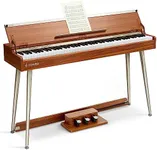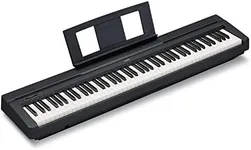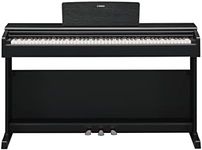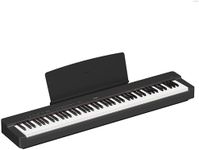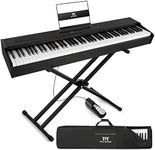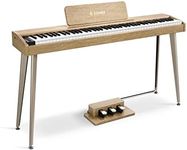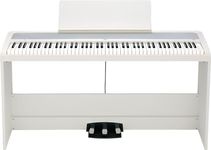Buying Guide for the Best Digital Piano 88 Key
Choosing the right digital piano can be a rewarding experience, especially if you know what to look for. Digital pianos are designed to replicate the sound and feel of an acoustic piano, but with added features and conveniences. When selecting a digital piano, consider your skill level, the space you have available, and the features that will enhance your playing experience. Understanding the key specifications will help you make an informed decision that suits your musical needs and preferences.Key ActionKey action refers to the mechanism that simulates the feel of an acoustic piano's keys. This is important because it affects how the piano responds to your touch, which can influence your playing technique and enjoyment. Key actions can range from semi-weighted to fully weighted, with graded hammer action being the most realistic. Beginners might prefer lighter actions for ease of play, while more advanced players often opt for fully weighted keys to mimic the feel of a traditional piano.
Sound QualitySound quality is determined by the digital piano's sound engine and speakers. It is crucial because it affects the authenticity and richness of the piano's sound. Look for pianos with high-quality samples from renowned acoustic pianos and powerful speakers for a full, resonant sound. If you are a beginner, a basic sound engine might suffice, but intermediate and advanced players should seek out models with more sophisticated sound technology for a more immersive experience.
PolyphonyPolyphony refers to the number of notes a digital piano can produce at once. This is important for complex pieces that require multiple notes to be played simultaneously. Polyphony can range from 32 to 256 notes. Beginners might be comfortable with lower polyphony, but as you progress, higher polyphony becomes essential to avoid note dropouts during intricate compositions.
ConnectivityConnectivity options, such as USB, MIDI, and Bluetooth, allow you to connect your digital piano to other devices like computers, tablets, or sound systems. This is important for recording, composing, or using educational apps. If you plan to use your piano for music production or learning, ensure it has the necessary connectivity features. Casual players might not need extensive connectivity, but it can be a valuable feature for those looking to expand their musical capabilities.
PortabilityPortability refers to how easy it is to move the digital piano. This is important if you need to transport your piano frequently or have limited space. Portable models are typically lighter and more compact, making them ideal for musicians on the go or those with small living spaces. If you plan to keep your piano in one place, a larger, more robust model might be suitable, but if you need flexibility, consider a portable option.
Additional FeaturesAdditional features can include built-in lessons, recording capabilities, and various sound effects. These are important for enhancing your learning and playing experience. Beginners might benefit from built-in lessons and simple recording functions, while advanced players might look for more sophisticated features like multi-track recording and customizable sound effects to expand their creative possibilities.

